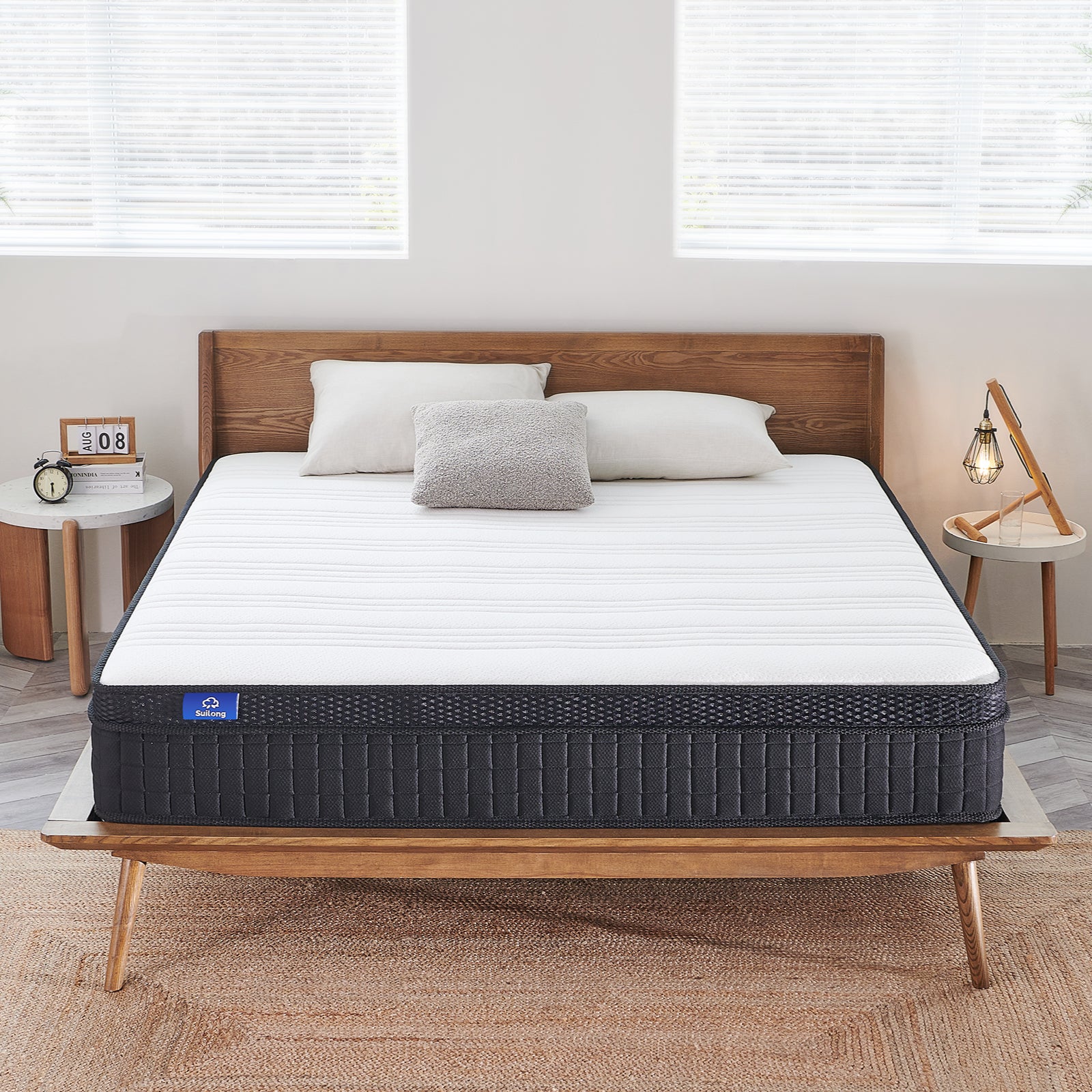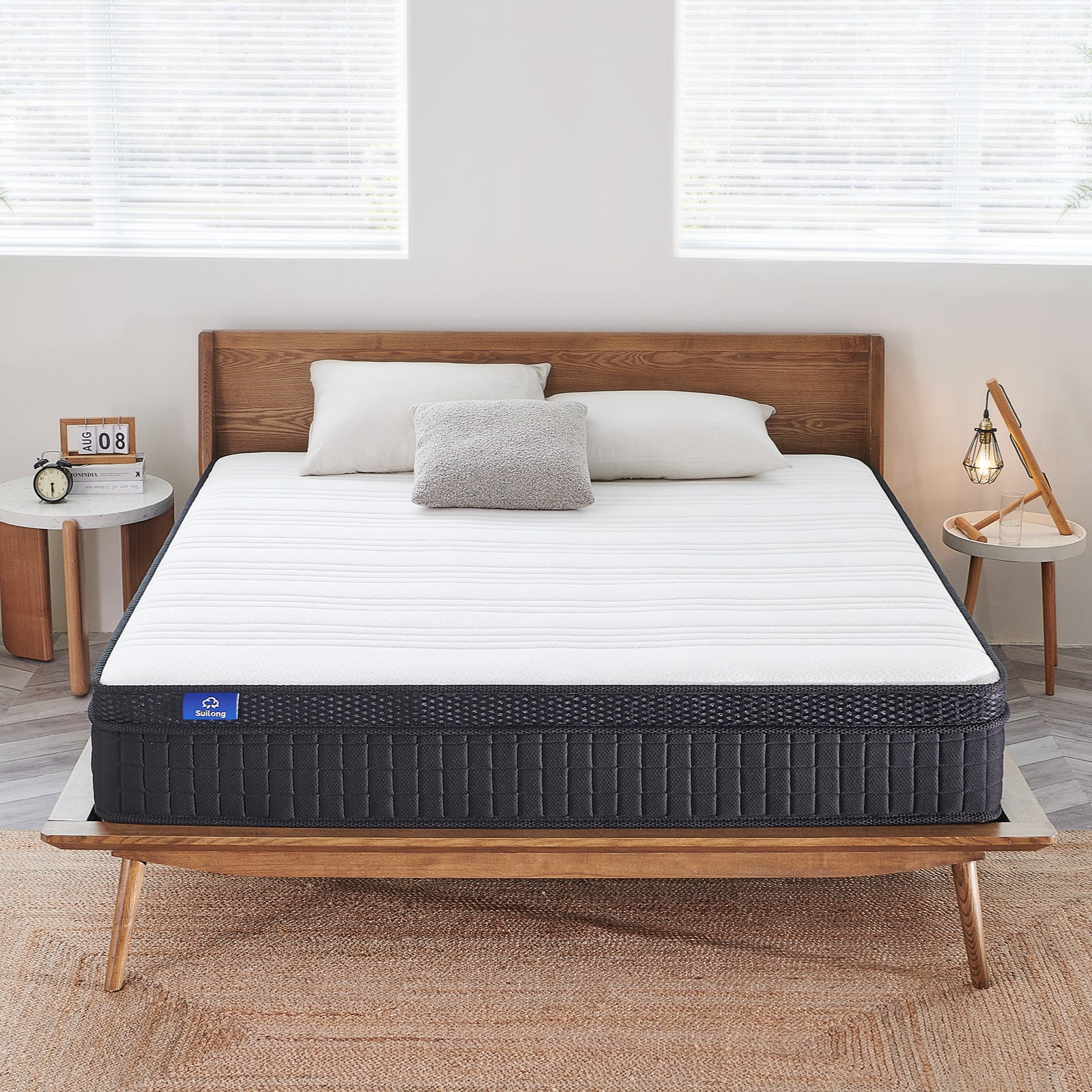Best Sleeping Position To Clear Lungs

Explore the connection between sleep positions and clear airways, discovering optimal postures for breathing and tips for lung health!
1. Relationship between sleep positions and airway clearance
Before going into the details of how to choose the best sleeping position for yourself, it is necessary to understand the relationship between different sleep positions and the smooth flow of the airway.
Analysis of the advantages and disadvantages of various sleeping positions
1. Side-lying: Pros and cons and its effect on the airway
Side-lying is a common sleep position, especially for those who do not breathe well.
Pros:
- The side-lying position helps air pass more smoothly through the airway.
- This position reduces the likelihood of airway compression, thus reducing the risk of airway obstruction and apnea.
Disadvantages:
- Care needs to be taken to choose the right pillow to prevent neck discomfort and pain.
- Prolonged side lying may lead to shoulder pain and pressure.
2. Semi-lying style: how to effectively reduce airway pressure
The semi-recumbent sleep position is a slightly elevated position of the head and upper body.
Advantage:
- It reduces pressure on the back and neck while keeping the airways open.
- It's an ideal sleep position for those who are prone to nasal congestion or suffer from chronic obstructive pulmonary disease (COPD).
The Challenge:
- A well-supported mattress and pillow are needed to maintain this position.
- Care needs to be taken at all times to avoid slipping off the mattress.
3. Head Elevation Pose: The Importance of Maintaining an Open Airway
The head-up position is another sleep position that helps with breathing.
Benefits:
- Elevating the head reduces the risk of airway obstruction, especially for people with sleep apnea syndrome.
- This position also helps reduce nasal congestion and provides smoother breathing.
Cautions:
- A proper pillow is needed to provide enough support and comfort to prevent neck and back pain.
2. Optimal phlegm-expelling sleep position
How to assist phlegm expulsion by adjusting posture
Choosing the right posture during sleep can promote phlegm expulsion from the lungs and reduce the burden on the airways, making it easier for us to breathe. Below are my personal experiences and suggestions to assist phlegm expulsion by adjusting posture:
Keep your head slightly elevated:
- Keeping the head slightly elevated relative to the body can prevent phlegm from returning and reduce discomfort in the throat and airways.
- Use one or two pillows or a special elevation pillow to help achieve this position.
Adopt a side-lying position:
- Lying on your side relieves pressure on the airways and reduces the buildup of phlegm in the airways, making it a good position for removing phlegm.
There are advantages and disadvantages to both left-side and right-side lying, so you can choose according to your personal feelings and needs.
Avoid prone position:
The prone position may increase the pressure on the lungs and airways, which is not conducive to phlegm expulsion and is therefore best avoided.
Recommended Sleep Positions for Expelling Phlegm and How to Do It
Through many trials and practices, I found that the following phlegm expulsion sleep positions and operation methods are more effective:
Half-lying sputum expulsion method:
- The semi-lying position can keep the airway open and reduce the accumulation of phlegm, which is a very effective position for expectoration sleep.
- Raise the head of the bed slightly, use pillows to support the head and neck, and keep the body at an angle of 15 to 45 degrees.
Phlegm Drainage Method:
- If there is a lot of phlegm, try using physical methods to aid in drainage.
- Lay a slightly inclined sheet on the bed and tilt the body slightly to use gravity to help drain phlegm from the lungs.
Breathing aids:
- The use of a breathing trainer or breathing assist device can strengthen the lungs and help phlegm move out of the lungs more easily.
- Follow the instructions for proper use of the device and practice and use it consistently.
3. Sleep techniques for respiratory clearance
Introduction to Effective Breathing Exercises
Doing breathing exercises before going to bed is a must for me every day, which is very effective in keeping the airway open.
- Deep Breathing Relaxation Exercises
I like to take a few sets of deep breaths before going to bed, which can help relax the nerves and reduce the stress of the day. With each breath, I try to inhale as much air as possible and then slowly exhale, a process that gives the airways a good stretch and workout.
- Circular Breathing
Close your eyes and slowly exhale all the air you can, then inhale and slowly exhale again. With this circular breathing method, I have effectively improved the function of lung movement and allowed for better breathing.
- Nasal Cleansing Exercise
I regularly clean my nasal passages with warm water to keep my airways moist and reduce breathlessness due to dryness.
Tips and advice on utilizing pillows and mattresses
Choosing the right bedding plays a very big role in improving sleep breathing as well.
- Choosing the right pillow
The height of your pillow has a big impact on how open your airways are. I choose pillows of moderate height, which can maintain the natural curve of the cervical vertebrae and also keep the airway open. In addition, I especially choose pillows with good breathability to allow air to circulate and reduce respiratory discomfort.
- Soft and hard choice of mattress
The comfort level of mattress is directly related to the quality of sleep and the smoothness of breathing. Personally, I prefer a medium-firm mattress, which can better support the body and maintain the natural curvature of the spine, thus enabling smoother breathing. In this case, I would recommend the Suilong Nimbus 12 Inch Hybrid Mattress, which has a unique design that combines the benefits of memory foam and springs to not only provide adequate support, but also adjusts to the shape of my body, creating a comfortable sleeping environment for me.
- Change and wash bedding regularly
How clean your bedding is also affects your breathing. I change my sheets and pillowcases weekly and wash my pillows and mattress quarterly to keep my bedding clean and minimize respiratory irritation.
4. Natural ways to stretch your airways
During the cold winter or dry season, the respiratory tract is prone to irritation, resulting in poor ventilation. So, how to relax the airway in a natural way has become a big topic of my daily concern.
Guidelines for using moisture and humidifiers
Considerations when choosing a humidifier
- Suitable model: According to the size of your living room, buy the right model of humidifier. If the living room is large, I would choose a humidifier with more power to ensure that the humidity of the whole space is enhanced.
- Maintenance and cleaning: The water tank inside the humidifier needs to be cleaned frequently to prevent bacteria from growing. After each use, I will empty the water tank in time and clean it regularly with detergent.
Proper use of humidifiers
- Avoid over-humidification: It is optimal to keep the indoor humidity between 40% and 60%. I usually use a hygrometer to monitor the indoor humidity to avoid over-humidification leading to humidity in the room and causing other problems.
- Placement: Humidifiers should not be placed near walls or furniture to prevent moisture from affecting them. I often place the humidifier in the center of the room or near the bed to better improve the breathing environment.
Recommended Moderate Exercise to Strengthen Lungs
Morning Breathing Exercise
- Benefits of Morning Exercise: The early morning air is the freshest of the day, and I usually choose to do my breathing exercises in the morning to help my lungs get enough oxygen.
- How to do breathing exercises: Inhale slowly, then hold your breath for a few seconds, and finally exhale slowly. I insist on doing this exercise every day to effectively exercise my lungs.
Yoga Breathing
- Yoga breathing method: Yoga breathing focuses on the rhythm of inhalation and exhalation. By doing yoga, I have not only soothed my body, but also learned to take deep breaths, which is very helpful for the relaxation of the respiratory tract.
- Regular practice: I schedule yoga time at least twice a week, each lasting an hour, and the long period of persistence allows me to breathe more smoothly.
5. Natural ways to relieve respiratory tension
Introducing breathing exercises to relieve respiratory tension
Respiratory tension can lead to difficulty in breathing and a feeling of depression. For this reason, I often practice some breathing exercises to relieve this situation.
Deep Breathing Exercises
Deep breathing exercises help me to stretch my airways. Every day I will pick a quiet environment, inhale carefully and then exhale slowly. On each inhalation, I feel my lungs fill with air and on the exhalation I let my body relax as much as possible. I perform this exercise for about 5 to 10 minutes every day.
Abdominal Breathing
Abdominal breathing is another method I commonly use when experiencing respiratory tension. To perform abdominal breathing, I inhale deeply through my nose, causing my abdomen to bulge, and then exhale slowly through my mouth. This process helps me control my breathing better and reduces the pressure on my airways.
Recommended herbs and teas to help relieve respiratory stress
Herbs and teas are great aids in toning the airways when they are strained. Here are some recommendations for herbs and teas that I use regularly:
Licorice Tea
Licorice has anti-inflammatory and cough suppressant properties that can reduce respiratory discomfort. I often make a cup of licorice tea and savor it slowly when I feel a slight discomfort in my respiratory tract, and it helps to ease the tension in my respiratory tract.
Peppermint Tea
Peppermint tea has a cooling flavor and effect that can help soothe my respiratory tract. When I feel some inflammation or discomfort in my respiratory tract, a cup of hot peppermint tea can make me feel much more comfortable.
Lemon Ginger Tea
Lemon ginger tea is one of my favorite drinks in the winter. Lemon is rich in vitamin C and helps boost the immune system, while ginger helps warm my body and relieve tension in my respiratory tract.
6. Breath-optimizing Sleeping Positions for All Types of People
1. Breath-optimizing Sleeping Positions Recommended for Specific Populations (e.g., the Elderly, Pregnant Women, Children)
- Elderly people:
The respiratory system of the elderly is relatively weakened due to age. For them, a semi-reclining sleeping position is the most appropriate, as it reduces the pressure on the lungs and respiratory tract and helps air flow more smoothly.
- Setting up in the semi-reclining position
Use a pillow with some height or an adjustable bed base to slightly elevate the upper body and reduce the burden on the respiratory system.
- Pregnant women:
Pregnant women are susceptible to breathing problems during pregnancy due to their enlarged abdomen. The left side lying position is ideal for pregnant women and not only helps with breathing, but also reduces pressure on the back.
- Specific ways to lie on the left side
Use a maternity pillow that supports the abdomen and back to keep the body stable and ensure smooth breathing.
- Children:
Children have a relatively narrow airway, so choosing a sleeping position that maximizes the opening of the airway is key.
- Appropriate Sleeping Positions for Children
In general, lying flat is the most appropriate sleeping position for children, avoiding the use of excessively high pillows.
2. Give generalized recommendations for breathing-optimized sleeping positions
Regardless of age, maintaining an open airway is very important. By adjusting our sleeping position, we can ensure smooth breathing and maintain a good quality of sleep.
- Choose the right pillow and mattress
The mattress should be supportive and comfortable, and the height of the pillow should be moderate, avoiding too high or too low.
- Pay attention to your diet and activities before bedtime
Avoid eating too much or engaging in strenuous exercise before bedtime, as these can affect breathing.
- Semi-reclining sleeping position
This position is suitable for most people, especially those with respiratory problems or breathing difficulties.
7. Getting the right bedding to help you breathe better
When night falls, everyone expects a good night's sleep. For a good night's sleep, apart from the correct sleeping position, the choice of bedding is also very important. Next, I'll share how to choose a mattress and pillow that help you breathe, so you can breathe well every night.
How to choose a mattress and pillow that helps you breathe?
- The choice of mattress material
The material of your mattress directly affects the quality of your sleep. You need to look for mattresses that are breathable and supportive so that you can ensure that you breathe well during your sleep. For example, latex mattresses and memory foam mattresses are good choices because of their good breathability and moderate support.
- Pillow height and hardness
The height and hardness of the pillow are also important factors that affect breathing. Generally speaking, the pillow should not be too high or too low, too hard or too soft. Choose a pillow that can effectively support the neck and keep the airway open.
"Suilong Nimbus 12 Inch Hybrid Mattress" Features and Benefits in brief
The Suilong Nimbus 12 Inch Hybrid Mattress is a mattress brand and model that I personally highly recommend. It combines the comfort of memory foam with the support of innerspring for an unparalleled sleeping experience.
- Hybrid construction design: This mattress combines the features of memory foam and innerspring to reduce pressure points while providing stable support.
- Temperature regulation: Its unique gel-infused memory foam helps regulate your body's temperature, keeping you cool and comfortable in any environment.
- Anti-allergy: If you have a history of allergies, there's no need to worry as it's made from anti-allergenic materials and is very allergy-friendly.
One thing that I personally appreciate is that this mattress provides comfort while still being breathable, greatly aiding in breathing.

Suilong Nimbus
12 Inch Hybrid Mattress
Look no further than the Suilong Nimbus 12-inch Hybrid Mattress.
Buy NowImportant criteria and suggestions for choosing the right pillow for you
- Choose the right pillow height: A pillow with a moderate height helps to maintain the natural curve of the neck and head, thus avoiding obstruction of the respiratory tract.
- Consider the material of the pillow: Choose a pillow material with good breathability, such as latex or down, which can ensure that breathing will not be affected by sweat and wetness at night.
- Personal habits and comfort: different people may be more adapted to different types and hardness of the pillow, so when buying should be based on personal sleeping habits and comfort to choose.
Buying bedding is not only for comfort, but also to ensure smooth breathing every night, I hope that every reader can pick the right bedding for them to enjoy high-quality sleep.
Optimal sleep positions contribute to healthier breathing. Select the right posture and elevate your respiratory wellness nightly!
FAQs
Q: What sleep position is recommended for individuals with chronic lung conditions?
A: For individuals with chronic lung conditions, sleeping in a slightly elevated position, like a reclined or semi-sitting posture, can facilitate easier breathing and reduce stress on the lungs.
Q: How does sleeping on the side affect breathing and lung function?
A: Side sleeping, especially on the left, can reduce airway obstructions, decrease acid reflux, and enhance overall lung and breathing function, making it a favorable position for many.
Q: What precautions should I take when changing sleep positions for better lung health?
A: Consult healthcare providers before making significant changes to your sleep positions, ensuring it’s safe given your health profile. Also, invest in supportive pillows and mattresses to maintain the position effectively.
Q: Can exercise improve my breathing during sleep?
A: Yes, regular exercise can strengthen respiratory muscles, improve lung capacity, and promote better breathing during sleep. Incorporate aerobic exercises and breathing techniques for best results.
Q: What types of pillows and mattresses support optimal breathing during sleep?
A: Opt for pillows that provide neck support without causing alignment issues. Mattresses should offer a balance of comfort and support, like the Suilong Nimbus 12 Inch Hybrid Mattress, facilitating open airways during sleep.
-
Posted in
best sleeping position, Buyer's Guide, Lifestyle, Mattress Tips, Shopping Tips, Sleep Experts, sleep health, sleep position, Sleep Tips, sleeping positions, the type of mattress


















